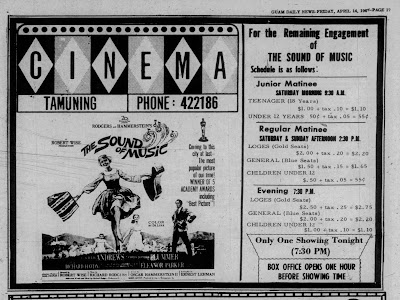FLECHA MEANS "ARROW"
This is one of the better-known Chamorro hymns to the Sacred Heart of Jesus. Alex Unpingco plays it in this video with parishioners joining in singing it.
LYRICS
I flechan Yu’us ha tokcha’ hit
(The arrow of God has pierced us)
I korason-ña ha guaiya hit.
(His heart has loved us.)
1. Håfa Jesus-ho i malago’-mo
(What, my Jesus, do you want)
Gi dinilok-mo nu i taotao?
(from your piercing of the people?) (1)
Yanggen i sensen pat i anti-ña
(If it be the flesh or its soul)
Yu’us Lahi-ña chuli’e’ hao.
(God the Son, take it for yourself.)
2. Guåho magåhet lånsan Longinos
(I am truly the lance of Longinus) (2)
Kalåktos, inos flumecha hao.
(Sharp, easily fitting, which pierced you.) (3) (4)
Tåya’ dumulok i korason-mo
(No one pierced your heart)
Na i patgon-mo ni guåho ha’.
(Except your child which I am.)
3. Sahguan guinaiya, figan na hotno
(Vessel of love, fiery furnace)
I korason-mo, mames Jesus.
(Is your heart, sweet Jesus.)
Tåya’ taiguennao na ginefli’e’
(There is no love like that)
Ha na’ ma li’e’ na si Yu’us.
(made visible except for God's.)
NOTES
(1) I interpret this to mean that our Lord pierces our hearts with His arrow of love in order to open our hearts to accept and be changed by His love. Love is repaid with love, as the Spanish saying goes. So we offer Jesus our bodies (sensen, which means flesh) and the soul (ånte) which gives life to the body.
(2) Longinus (in Spanish Longinos) was, according to tradition, the Roman soldier who pieced Jesus' side with a lance (spear), opening the Lord's heart from which flowed blood and water, representing the Eucharist and Baptism. Longinus left the Roman army and became a Christian and later died for the faith and is considered a saint.
SAINT LONGINUS WITH SPEAR
Mary and Saint John at Calvary
(3) Flumecha means "to be arrowed." Although "arrowed" does exist in English, it isn't common.
(4) Inos means something that is able to slide into something else. Thus it can also mean slender. But a fat snake can still fit into a narrow crack, so even it is inos. When a hand can fit snuggly into a glove, or when a key can easily be inserted into a lock, those are all inos.
SPANISH ORIGINAL
Many of our Chamorro hymns are based on Spanish hymns. I Flechan Yu'us is taken from the Spanish hymn "Con Flecha Ardiente," meaning "With a Fiery Arrow."
The Spanish version says :
Con flecha ardiente, dueño y Señor
(With a fiery arrow, master and Lord)
abre en mi pecho llaga de amor.
(open in my chest a wound of love.)
A lot of the Spanish original says the same thing, or contains the same images, as the Chamorro version. I won't give all of the Spanish lyrics, but here's some more which shows that the Chamorro version is based off the Spanish :
Tu amante pecho, no fue el soldado
fue mi pecado quien lo rasgó.
Your loving breast, it wasn't the soldier,
it was my sin which ripped it open.
The "soldier" mentioned is Longinus, as is named in the Chamorro version.











.jpg)
